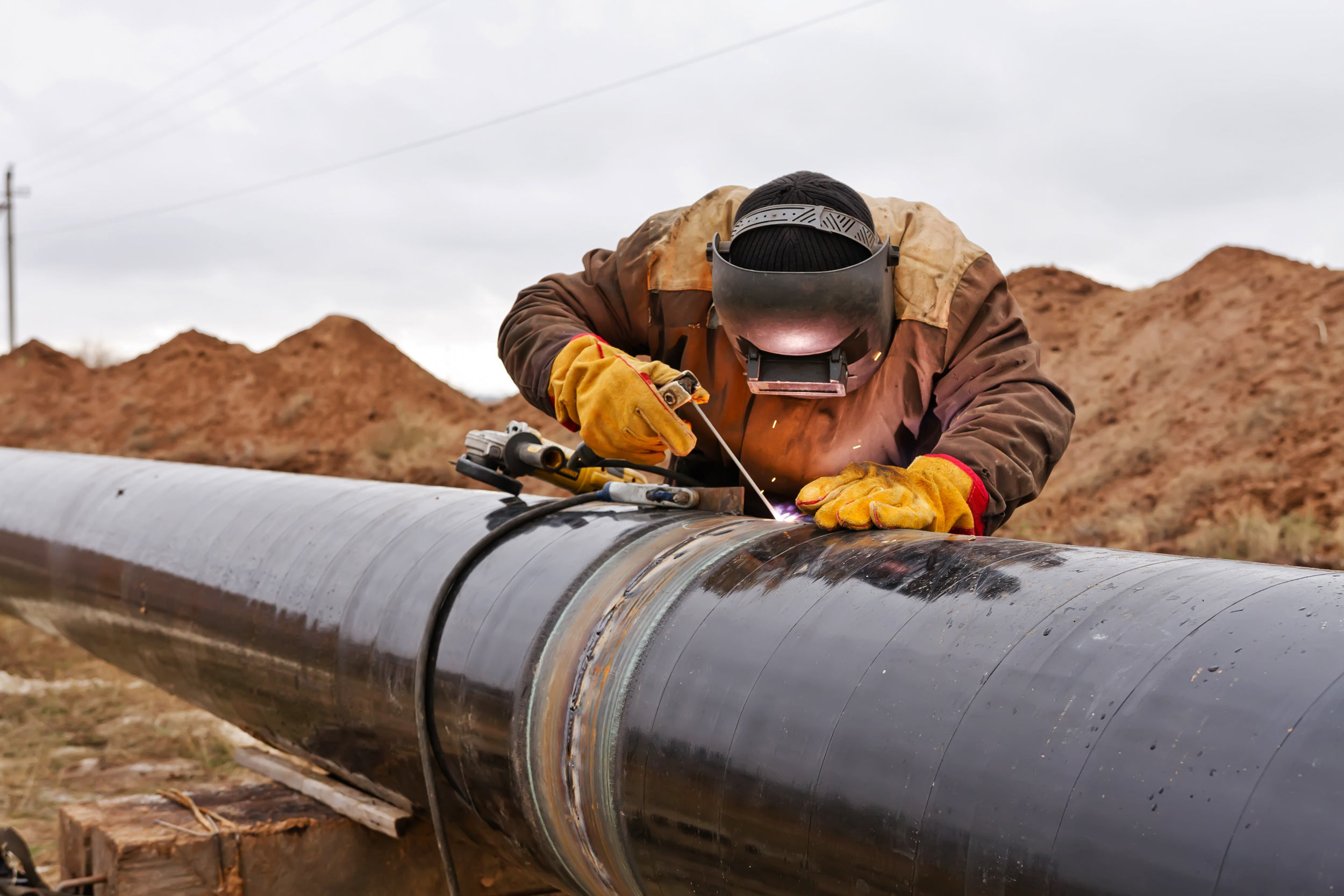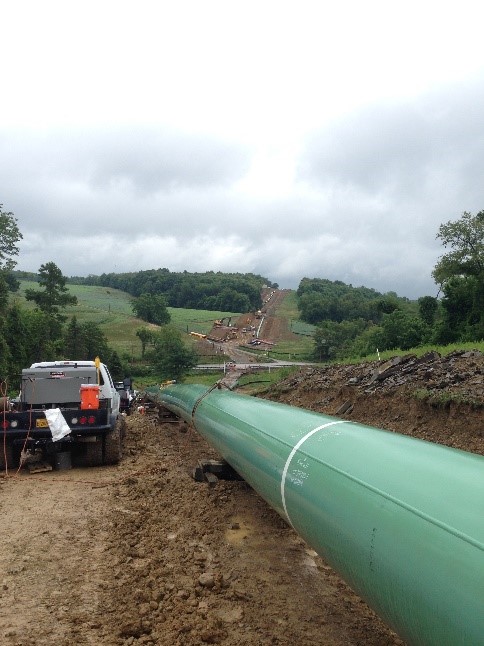Top Reviews of Creek Pipe Texas oilfield Projects
Wiki Article
Comprehending the Essentials of Pipes Installation: What You Need to Know About the Refine
Correct pipe installation is necessary for any plumbing system. It requires cautious consideration of different variables, including product selection and adherence to neighborhood policies. A well-planned design can prevent issues like stress loss, while the right tools assure efficient joining methods. Also experienced installers can make typical errors. Comprehending these basics can bring about an extra reliable and sturdy system, prompting a more detailed look at the vital components entailed in the process.Picking the Right Materials for Pipe Installation
When considering pipe installation, the choice of suitable materials is necessary to guaranteeing sturdiness and functionality. Various materials are readily available, each offering one-of-a-kind benefits and considerations. PVC pipelines are lightweight, immune to deterioration, and cost-efficient, making them optimal for property plumbing. Alternatively, copper pipelines, known for their longevity and ability to endure heats, are often favored for home heating systems.Additionally, galvanized steel pipelines give stamina and sturdiness, ideal for heavy-duty applications, although they are at risk to corrosion over time.For underground installments, polyethylene pipelines are favored due to their versatility and resistance to tension fracturing. Correct material option depends upon the details demands of the job, consisting of pressure rankings, temperature variations, and the chemical nature of the liquids being moved - Creek Pipe Texas oilfield. Eventually, notified selections concerning pipe materials add greatly to the general success and long life of plumbing systemsComprehending Local Building Codes and Regulations
Exactly how can comprehending local building regulations and laws influence pipe installation? Experience with these codes is essential for guaranteeing that pipe setups are secure, compliant, and efficient. Regional structure codes lay out particular demands concerning materials, installation methods, and precaution, which should be stuck to to avoid possible lawful issues and pricey fines.Failure to abide can bring about examinations being failed, hold-ups in project completion, and even mandated removal of incorrectly set up pipes. Additionally, comprehending zoning laws and policies can influence the sort of materials enabled, in addition to the techniques utilized for installation.Contractors and homeowners alike must invest time in evaluating regional regulations prior to beginning any type of installation project. This proactive approach not just advertises safety and security yet likewise improves the overall quality and toughness of the plumbing system, ultimately cultivating lasting performance and satisfaction.Preparation Your Pipe Design and Style
Proper preparation of pipe design and design is necessary for attaining a reliable pipes system. This process starts with reviewing the certain needs of the space, thinking about the place of fixtures and home appliances. Precise measurements guarantee that pipelines are correctly transmitted, decreasing bends and transforms that can result in push loss.Consideration of the flow prices and the kinds of materials used is essential, as different products have varying toughness and compatibility with plumbing systems. In addition, the designer must account for future growths or adjustments to the layout, permitting flexibility in situation of renovations.Efficient drainage and ventilation are likewise considerable parts of the design, as they stop blockages and guarantee appropriate waste elimination. Partnership with neighborhood building codes assures compliance and safety, which is critical in any type of pipes installation task.Important Devices and Tools for Installation
Successful pipe installation depends upon having the right tools and devices handy. Vital devices consist of pipe cutters for tidy cuts, wrenches for tightening up installations, and pliers for gripping and turning pipes. Additionally, a level guarantees pipes are set up equally, while a determining tape help in attaining accurate lengths.For certain products, a welding torch might be essential for copper pipes, while a PVC cutter is vital for plastic alternatives. Security devices, such as gloves and goggles, safeguards installers from prospective hazards during the process.A pipeline bender can be specifically beneficial for producing smooth curves without jeopardizing honesty, while a torque wrench assurances that links are protected to the producer's specifications.Having these tools readily available not only facilitates a smoother installation procedure yet additionally adds to the general longevity and capability of the pipes system. Proper tools is critical in achieving long-lasting outcomes.Methods for Correct Pipe Signing Up With and Sealing
Achieving a secure and leak-free link in between pipelines needs careful focus to signing up with and sealing strategies. Different techniques exist, each fit to different pipe materials and applications (Creek Pipe near me). As an example, welding is often used for metal pipes, guaranteeing durable connections via warm combination. On the other hand, plastic pipelines profit from solvent cement or blend welding, producing solid, permanent bonds.Threaded connections prevail in both metal and plastic piping, needing specific positioning and making use of suitable sealers, such as Teflon tape or pipe dope, to avoid leakages. Compression fittings provide an additional option, where mechanical stress protects the pipelines with each other, making them easily dismantled for maintenance.Regardless of the technique picked, correct preparation is crucial. This includes cleaning pipe finishes and ensuring they are devoid of particles. Implementing these methods carefully will enhance the long life and reliability of the pipe system, eventually adding to its reliable efficiencyCommon Mistakes to Prevent Throughout Installation
During pipe installation, avoiding typical blunders is essential for making sure a reputable and reliable system. One frequent error is failing to measure and cut pipelines properly, which can lead to improper fittings and leakages. In addition, overlooking to inspect the compatibility of products can lead to rust or other damages with time. Poorly safeguarding joints and links can additionally develop weak factors in the system, causing potential failures.Another usual blunder is overlooking the significance of slope and drain; pipes must be installed at the proper angle to assist in appropriate flow. Poor assistance for pipes can bring about drooping and anxiety, Creek Pipe Midland impacting the integrity of the system. Ultimately, ignoring regional codes and policies can result in pricey rework and security risks. By understanding these mistakes, installers can significantly enhance the sturdiness and performance of pipe systems.Maintenance Tips for Durable Pipe Systems
To ensure the longevity of pipe systems, regular evaluations and cleansing are crucial techniques. These measures help determine potential concerns before they intensify into significant problems. Furthermore, using correct insulation methods can better protect pipes from temperature level variations and ecological aspects.Normal Evaluations and Cleaning Up
Normal inspections and cleansing are important for preserving the long life and performance of pipe systems. Frequently analyzing pipelines for signs of corrosion, leaks, or blockages can assist determine possible problems prior to they intensify into pricey repair services. Cleaning pipes occasionally removes buildup that can limit circulation and promote degeneration. It is suggested to schedule assessments a minimum of annually, but a lot more frequent checks might be required in high-usage atmospheres. Using professional services for complete cleansing assurances that all debris is efficiently gotten rid of. In addition, maintaining records of assessments and maintenance activities aids in tracking the system's health and wellness gradually - Creek Pipe Midland. By prioritizing these techniques, residential or commercial property owners can enhance the integrity and life-span of their pipe systemsProper Insulation Techniques
Efficient insulation methods play a vital role in maintaining the performance and long life of pipe systems. Appropriate insulation reduces heat loss in warm water pipes and protects against cold in chilly water pipes, considerably lowering energy prices and prospective damage. Typical materials utilized for insulation include fiberglass, foam, and rubber, each offering differing degrees of thermal resistance. It is vital to assure that insulation is applied evenly, covering all exposed locations without spaces. Additionally, safeguarding insulation with appropriate bolts helps keep its position and performance in time. Normal evaluations need to be performed to recognize wear and tear, assuring prompt substitutes. By applying these techniques, pipe systems can run efficiently and have a prolonged life span, inevitably profiting both the environment and the house owner.
Frequently Asked Inquiries
Just how Do I Identify the Appropriate Pipe Size for My Job?
Figuring out the appropriate pipe dimension includes examining the task's circulation needs, pressure specs, and the kind of fluid being delivered. Consulting layout criteria and conducting calculations assurances optimal efficiency and effectiveness in the installation procedure.What Are the Ecological Impacts of Different Pipe Products?

Can I Install Pipes Myself or Should I Hire a Professional?
The question of whether to install pipes separately or employ a professional frequently depends upon the individual's skill level and project complexity. A professional might assure compliance with policies and decrease prospective lasting problems.
How Much Time Can I Anticipate My Pipe Installation to Last?
The longevity of pipe installation varies substantially, typically lasting 20 to 100 years, relying on materials, installation quality, and upkeep. Regular examinations and appropriate treatment can improve durability and prevent premature failures.
What Are the Signs of a Failing Pipe System?
Indications of a failing pipe system consist of frequent leaks, unusual water pressure adjustments, blemished water, mold growth, and persistent dampness. Home owners need to keep an eye on these indicators to prevent expensive damages and warranty timely fixings are made.Report this wiki page